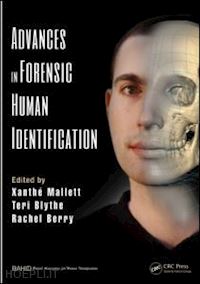Xanthé Mallett is a lecturer in criminological sociology and forensic science based in Australia. She has worked on a collaborative facial recognition project with the FBI, undertaken casework in the area of child sex abuse, and has coauthored expert witness reports. Her research relates to behavior patterns of sex offenders, and societal, legal, and political responses to cases of child sexual abuse on an international scale. Xanthé has been involved with BAHID (British Association for Human Identification) for many years, fulfilling several roles including serving as student representative, conference convener, and membership secretary. She has also presented and contributed to a number of television series, including History Cold Case, The Decrypters, National Treasures Live, Coast Australia, and Wanted. Teri Blythe is a specialist in forensic art and human identification with a background in human anatomy and forensic anthropology. She has spent many years working in the field of missing persons, including as head of identification while with the Missing People charity. Her expertise includes forensic artwork such as postmortem facial reconstructions and both child and adult age progressions. Teri has been a council member of BAHID for a number of years. Rachel Berry is currently undertaking a PhD in biomedical engineering at the University of Auckland, New Zealand. She holds a BSc (hons) in forensic anthropology, an MSc in human identification and has more than five years experience demonstrating gross human anatomy. Her previous research projects include the impact of scavenging on the recovery of human remains, evaluation of the potential of geometric morphometric techniques to identify offenders by the shape of their hand, and human provenancing using stable isotope analysis of hair and bone. Rachel was previously a member of the Council for the British Association for Human Identification.











